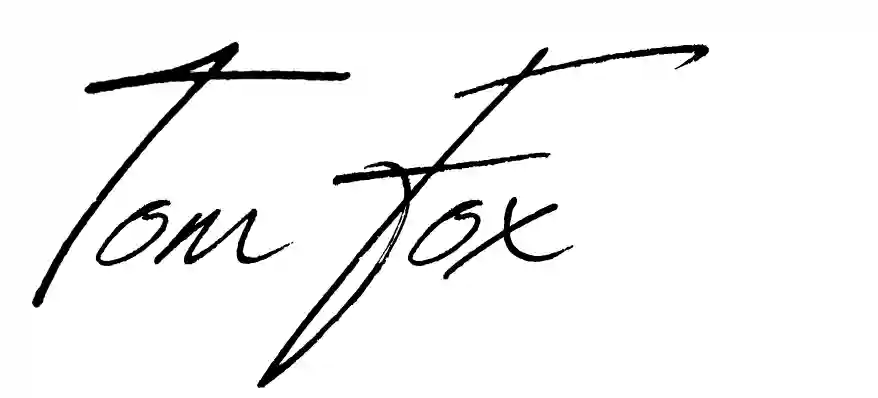See What Others Miss: How to Use Cognitive Blind Spots to Your Advantage
Seeing the Unseen: How Cognitive Blind Spots Can Boost Your Sales
Alright, perceptive perceptionists, let’s explore those fascinating quirks of our brains – cognitive blind spots.
No, I’m not talking about needing an eye patch!
This is about how we can miss the most obvious things even when they’re right in front of us.
Done with the endless sales theory and ready to actually close more deals? If you want to skip the ‘WHY’ and get straight to the ‘HOW’?
Make “Coffee with a Closer” your next move. Get weekly, battle-tested action steps delivered directly to your inbox – no fluff, just results.
The Invisible Gorilla (No, Seriously!)
Ever heard of the Invisible Gorilla experiment?
People watched a basketball game video, tasked with counting passes.
Midway through, someone in a gorilla suit strolls across the court, even thumping their chest!
Yet, most viewers completely miss it.
Why?
Their brains were so focused on the passes, they filtered out the gorilla as irrelevant.
That’s inattentional blindness in action.
Our brains are constantly filtering information, deciding what’s important.
Sometimes, even the most obvious details slip through the cracks.
Why Our Brains Play Tricks on Us: The Evolutionary Advantage
It might seem counterintuitive that our brains would evolve to miss seemingly important information.
But in the context of our evolutionary history, these cognitive blind spots actually served a crucial purpose: survival.
Information Overload:
Imagine our ancestors on the savanna, constantly bombarded with sensory input – rustling leaves, animal calls, the wind.
If they paid equal attention to everything, their brains would be overwhelmed.
Cognitive filtering allowed them to focus on immediate threats and opportunities, like a lurking predator or a potential food source.
Efficiency and Speed:
In a survival situation, quick decisions are crucial.
By filtering out “irrelevant” information, our ancestors could react faster to danger, increasing their chances of survival.
Pattern Recognition:
Our brains are wired to recognize patterns.
This ability helped our ancestors predict the behavior of prey, identify potential dangers, and navigate their environment.
Cognitive blind spots can be seen as a byproduct of this pattern-seeking mechanism, as our brains sometimes fill in the gaps or overlook anomalies that don’t fit the expected pattern.
“Become a master of perception! Use cognitive blind spots to highlight your strengths and make objections disappear.”
Tom Fox
How to Use these Cognitive Blind Spots to Your Advantage (Ethically, of Course!)
While we’re no longer dodging saber-toothed tigers, these cognitive mechanisms still influence how we perceive the world.
In the context of sales, understanding these evolutionary roots can help you:
Empathize with Your Prospects:
Recognize that their brains are also constantly filtering information.
By minimizing distractions and highlighting key points, you’re helping them focus on what’s truly important.
Tailor Your Message:
Consider the “information overload” your prospects face daily.
Keep your message concise, clear, and relevant to their needs.
Use Storytelling:
Stories tap into our innate pattern-seeking tendencies.
By framing your product or service within a compelling narrative, you can make it more memorable and persuasive.
Minimize Distractions:
Create a focused environment for your sales conversations.
Minimize interruptions, silence your phone, and choose a quiet location.
Think about the last time you were in a car showroom.
They are usually very quiet places with not much going on, except for the cars.
Highlight Key Information:
Use visual aids, bold text, and repetition to emphasize the most important points.
If you are giving a presentation, don’t just read off the slides, use your voice and body language to emphasize the key parts.
Ask Questions:
Engage your prospects with questions, encouraging active participation.
This keeps them focused and ensures they’re truly processing the information.
A simple “does that make sense?” can work wonders.
Practical Examples:
- During a presentation: Don’t just show a slide with a bunch of numbers; highlight the key figures with a different color or animation.
- During a product demonstration: Focus on the features that solve the prospect’s biggest pain points. Don’t overwhelm them with every single bell and whistle.
- During a sales conversation: After explaining a complex concept, pause and ask, “What are your initial thoughts on this?” to gauge their understanding and keep them engaged.
The Flip Side: Directing Attention
Here’s where it gets interesting: you can use cognitive blind spots to subtly guide your prospect’s attention.
By emphasizing specific benefits, you can make potential drawbacks less noticeable.
This isn’t about deception; it’s about framing your message effectively.
A Story of Cognitive Blind Spots in Real Estate
Imagine a real estate agent showing a charming Victorian house to a young couple eager to buy their first home.
The agent skillfully highlights the beautiful original features – the stained glass windows, the ornate fireplace, the spacious front porch.
They paint a picture of cozy evenings by the fire and lazy Sunday brunches on the porch.
The couple, captivated by the romantic vision, might overlook potential drawbacks, such as the outdated plumbing or the creaky floorboards.
Their brains, focused on the positive aspects, might filter out these less desirable details.
Want to become a master of influence and guide your prospects’ perception? Cognitive blind spots offer a fascinating key. Sign up for the “Coffee with a Closer” and learn practical techniques to direct attention, highlight your strengths, and craft persuasive sales narratives that resonate deeply.
Cognitive Blind Spots: Your Secret Weapon for Sales Success
By understanding cognitive blind spots, you can become a master of ethical persuasion, subtly guiding attention and influencing decisions.
It’s like being a mental magician, making them see what truly matters (without any trickery).
So, go forth and leverage the power of cognitive blind spots. Your sales numbers (and your prospect’s attention spans) will thank you!

PS: Want the most powerful persuasion hacks delivered straight to your inbox? Sign up for the “Coffee with a Closer” today!


